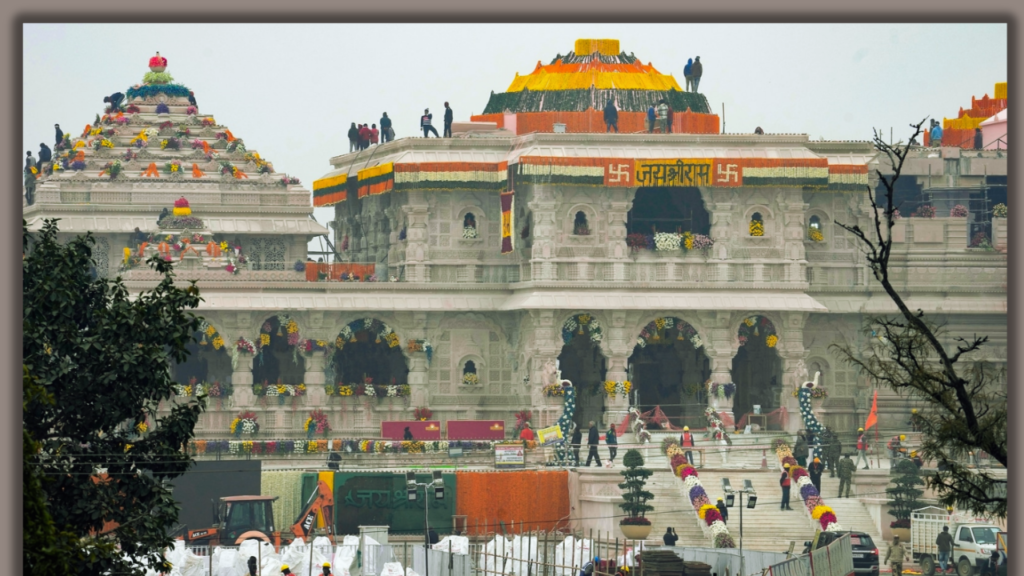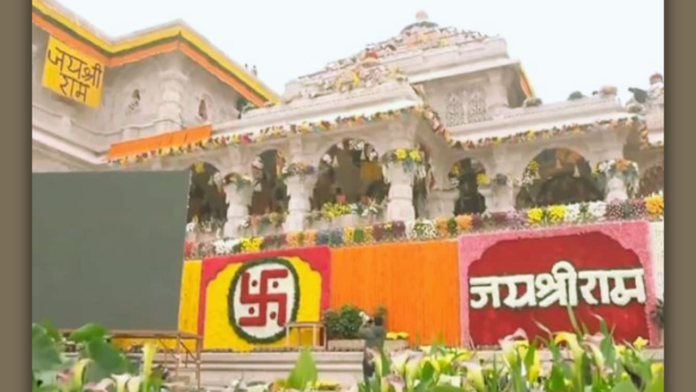ayodhya ram mandir much-awaited Ram Temple
consecration ceremony has enthralled millions of people worldwide. The sacred occasion, which will be led by Prime Minister Narendra Modi as the “chief guest,” is set to happen on Monday at the root time, an auspicious time.
In recent days, a number of words related to the consecration have gained popularity. What they mean is this
*Yajman*ayodhya ram mandir.

Main participant in worship, or the one for whom the prayer is offered, is known as the “Yajman”. Prime Minister Modi is scheduled to be the chief guest during the ceremony, and 14 couples from across the nation will also perform the role of the Yajman. The chief Yajman for the pre-consecration ritual was Dr. Anil Mishra and his wife Usha Mishra, appointed by the ayodhya ram mandir trust.
*Pratistha*ayodhya ram mandir.
Translation of Pran Pratishtha is “establishing life force” or “bringing the deity to life. The five-year-old deity Lord Ram’s idol will be changed into a holy and divine being during the ritual. Following the ritual, Lord Ram’s idol will be transformed into a god who will hear prayers and grant blessings to his followers.
*Acharya*ayodhya ram mandir
Often leading and conducting religious ceremonies and practices, a “Acharya” is a spiritual teacher or leader. Ganeshwar Shastri Dravid will oversee all Ayurvedic activities, while a minimum of 121 “Acharyas” will supervise the rituals. Kashi’s Lakshmikant Dikshit will serve as the principal “Acharya” ayodhya ram mandir.
Mool Muhurat
For a consecration ceremony, there is a designated auspicious moment known as the “Mool Muhurat”. Eighty-four seconds will pass during the ayodhya ram mandir ceremony. During this brief but monumental time, Prime Minister Modi will carry out the custom of opening the idol’s eyes from the back and then applying kohl to them with a thin golden rod.
Garbha Griha
“Garbha Griha” literally means “womb chamber.” It is a combination of the Sanskrit terms “griha,” which means house, and “garbha,” which means womb. This portion of the ayodhya ram mandir is devoted to setting up the main deity’s idol.
Anushthan
This is a term used to describe a stringent spiritual practice that lasts a certain number of days and requires completing a certain number of austerities or mantras. It consists of the combination of two words.

Place is denoted by “Sthan,” and “Anu,” which means later or together. An 11-day ceremony under Prime Minister Modi’s direction had been announced.
Shobha Yatra
The “Shobha Yatra,” or the idol’s circumambulation around the temple, is a significant preliminary stage. It is thought that as the idol moves by, the spectators’ devotion is absorbed into it, transferring divine energy and devotion. It represents the start of the idol’s deity-transformation process.
Kalash Pujan
“Kalash Pujan” is the ceremonial process of worshiping or consecrating a “Kalash,” which is a vessel made of clay, metal, or earth, on special occasions. Filling it with water, grains, coins, and other symbolic objects is customary; it represents abundance and purity. The water in the Kalash is thought to be a representation of the original water, from which life once emerged.

